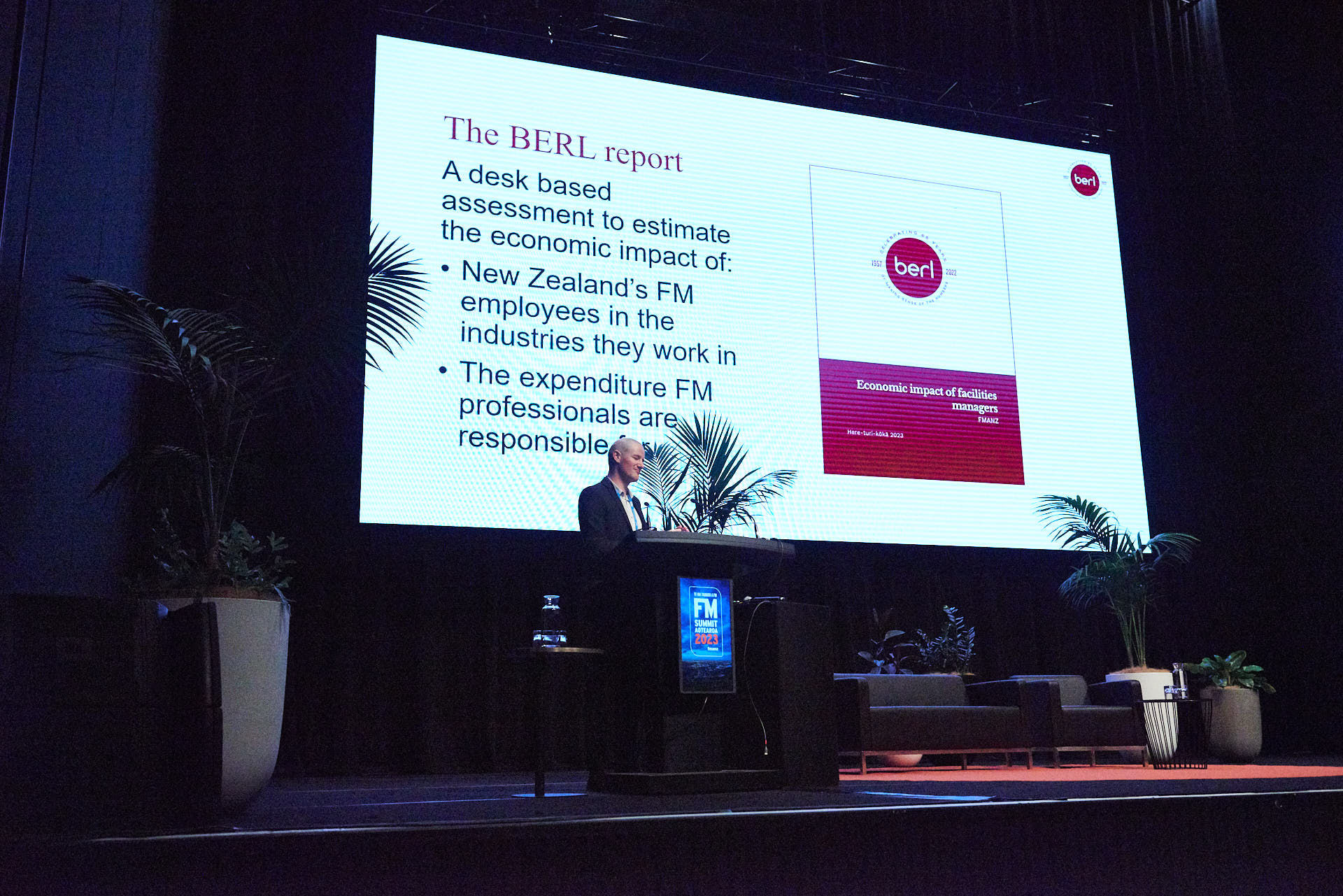Quantifying the value of facilities management
Facilities managers are the often unseen custodians of our physical places. They are the people who look after our offices, warehouses, shopping malls, hospitals, schools, sports stadiums, museums, art galleries, and more. They are charged with making sure all indoor places and infrastructure operate productively and within health and safety standards, being responsible for functions such as indoor air quality, energy efficiency, workplace optimisation, and many more – ensuring the building, its contents, assets, and people are looked after.
The people who manage our facilities work in a wide variety of occupations across all of Aotearoa New Zealand’s industries. This makes it difficult to easily calculate the contribution they make to the economy. Until now, the economic impact of this profession in Aotearoa New Zealand has been largely unmeasured, limited to short sections as part of larger international reports.
Ahead of its annual summit, the Facilities Management Association of New Zealand (FMANZ) commissioned Business and Economic Research Limited (BERL) to undertake a desk based assessment to estimate the economic impact of New Zealand’s facilities management professionals.

BERL’s research reveals that the facilities management sector is greater than the 2,775 people reportedly employed in facilities manager and facilities administrator occupations, and includes employees across a broad range of roles and industries. Collectively, facilities management professionals are estimated to be responsible for $7 billion of direct expenditure in the Aotearoa New Zealand economy each year, directly contributing $3.5 billion to GDP and supporting the employment of almost 22,800 full-time equivalent employees (FTEs).
As this expenditure circulates through the economy, additional indirect and induced expenditure adds about another $8 billion to expenditure, bringing total expenditure to almost $15 billion in the national economy in 2022, adding a total of $7.4 billion to GDP, and supporting just under 48,000 FTE jobs.